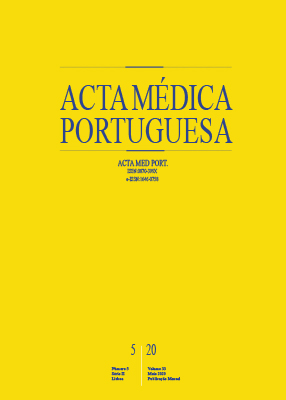Cutaneous Toxicity of Immune Checkpoint Inhibitors: A Narrative Review
DOI:
https://doi.org/10.20344/amp.12424Keywords:
Antineoplastic Agents/adverse effects, Immunomodulation/drug effects, Neoplasms/drug therapy, Programmed Cell Death 1/antagonists & inhibitors, Receptor Skin Diseases/chemically inducedAbstract
Introduction: Immune checkpoint inhibitors revolutionized anti-neoplastic treatment. Recently, the European Medicines Agency and the United States Food and Drug Administration approved inhibitors of various immune checkpoints, namely the cytotoxic T-lymphocyte-associated protein 4, programmed cell death protein 1 and its ligand. Despite the added benefits in the treatment of several neoplasms, immune checkpoint blockade may also be associated with multiple immune-related adverse events.
Material and Methods: A literature review in PubMed database on the cutaneous toxicity of immune checkpoint inhibitors was performed until April 30, 2019.
Results and Discussion: A total of 380 articles were initially screened, of which 75 are the basis of this bibliographic review. The immune checkpoint inhibitors monoclonal antibodies produce their beneficial effects by activating the patient’s immune system. This activation also results in adverse events that can affect any organ, whereas cutaneous toxicity is the most frequent and precocious. The adverse events of the programmed cell death protein 1 and its ligand and of the cytotoxic T-lymphocyte-associated protein 4 are similar (class effect), despite the apparent higher skin toxicity of inhibitors of the cytotoxic T-lymphocyte-associated protein 4 (or its use in combination with inhibitors of programmed cell death protein 1 and its ligand). The most common cutaneous toxicities are maculopapular exanthema and pruritus, but other more specific adverse effects (e.g. lichenoid or psoriasiform reaction, vitiligo, sarcoidosis, among others) or located in the oral mucosa and/or adnexa are underreported.
Conclusion: Given the high rate of cutaneous toxicity associated with new immune checkpoint inhibitors and their impact on quality of life, their early recognition and appropriate approach are crucial in the treatment of cancer patients. Observation by a dermatologist should be provided in patients with certain toxicities.
Downloads
Downloads
Published
How to Cite
Issue
Section
License
All the articles published in the AMP are open access and comply with the requirements of funding agencies or academic institutions. The AMP is governed by the terms of the Creative Commons ‘Attribution – Non-Commercial Use - (CC-BY-NC)’ license, regarding the use by third parties.
It is the author’s responsibility to obtain approval for the reproduction of figures, tables, etc. from other publications.
Upon acceptance of an article for publication, the authors will be asked to complete the ICMJE “Copyright Liability and Copyright Sharing Statement “(http://www.actamedicaportuguesa.com/info/AMP-NormasPublicacao.pdf) and the “Declaration of Potential Conflicts of Interest” (http:// www.icmje.org/conflicts-of-interest). An e-mail will be sent to the corresponding author to acknowledge receipt of the manuscript.
After publication, the authors are authorised to make their articles available in repositories of their institutions of origin, as long as they always mention where they were published and according to the Creative Commons license.









